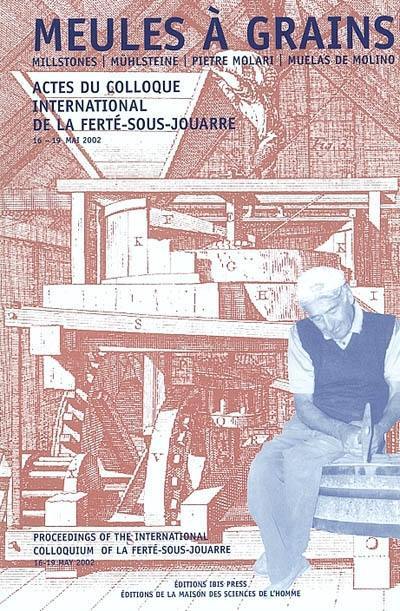
Fiche technique
Format : Broché
Nb de pages : 470 pages
Poids : 614 g
Dimensions : 16cm X 24cm
EAN : 9782735109968
Meules à grains
actes du colloque international, La Ferté-sous-Jouarre, 16-19 mai 2002
Quatrième de couverture
Actes du colloque international de La Ferté-sous-Jouarre 16-19 mai 2002
Depuis que le pain est quotidien, les meules sans relâche broient le grain. Meules à main, à traction animale, à eau ou à vent, les techniques sont diverses pour un même dessein: obtenir la farine fraîche qui nourrira en participant au plaisir des sens - ne dit-on pas «fleur de farine»?
À La Ferté-sous-Jouarre, capitale de l'industrie meulière au XIXe siècle, s'est tenu un colloque qui nous entraîne dans un grand voyage à la découverte de cette industrie qui fut peut-être la plus ancienne de l'humanité. Venus de seize pays différents, les auteurs ont parlé des matériaux et de leur extraction, du façonnage et du commerce des meules, de leurs usages et des rites qui les accompagnent, de leur entretien, de leur décoration - et du travail extênuant, jusqu'à la mort, des ouvriers meuliers.
Émanant d'historiens, d'éthnologues, de spécialistes des traditions populaires ou d'amis érudits des moulins, ces textes proposent autant de regards différents sur les derniers siècles d'une industrie qui aurait complètement disparu sans l'obstination de quelques meuniers attardés... ou futuristes. Grâce à eux, c'est un chapitre essentiel de l'histoire de notre quotidien à tous qui sort de l'obscurité.
Grain Millstones
Proceedings of the international colloquium of La Ferté-sous-Jouarre 16-19 May 2002
Ever since bread became a staff of life, millstones have turned to grind the grain needed to make it. Hand querns, mills powered by animal draught, water or wind, all these diverse techniques serve one single purpose: making fresh flour that will satisfy the appetite, all the while appeating to the senses. Remember, "flour" and 'flower' are from the same word for the 'best' of anything.
La Ferté-sous-Jouarre, millstone capital of the world in the 19th century, played host to an international Colloquium that enables us to discover this industry, which is perhaps the oldest of humanity. The authors came from 16 different countries to speak of stones and how they were quarried and dressed, of the trade in millstones, the ways they were used and the rituals that they gave rise to, how they were kept up or decorated and, also, of the hard and often dangerous life of millstone quarriers and cutters. Written by historians, ethnologists, specialists in popular traditions and millstone technology, the texts provide varied perspectives on the recent centuries of the history of an industry that would have died out completely, had it not been for the stubborn determination of a few diehard millers... or visionaries. These studies reveal a vital chapter in the history of everyday life.





